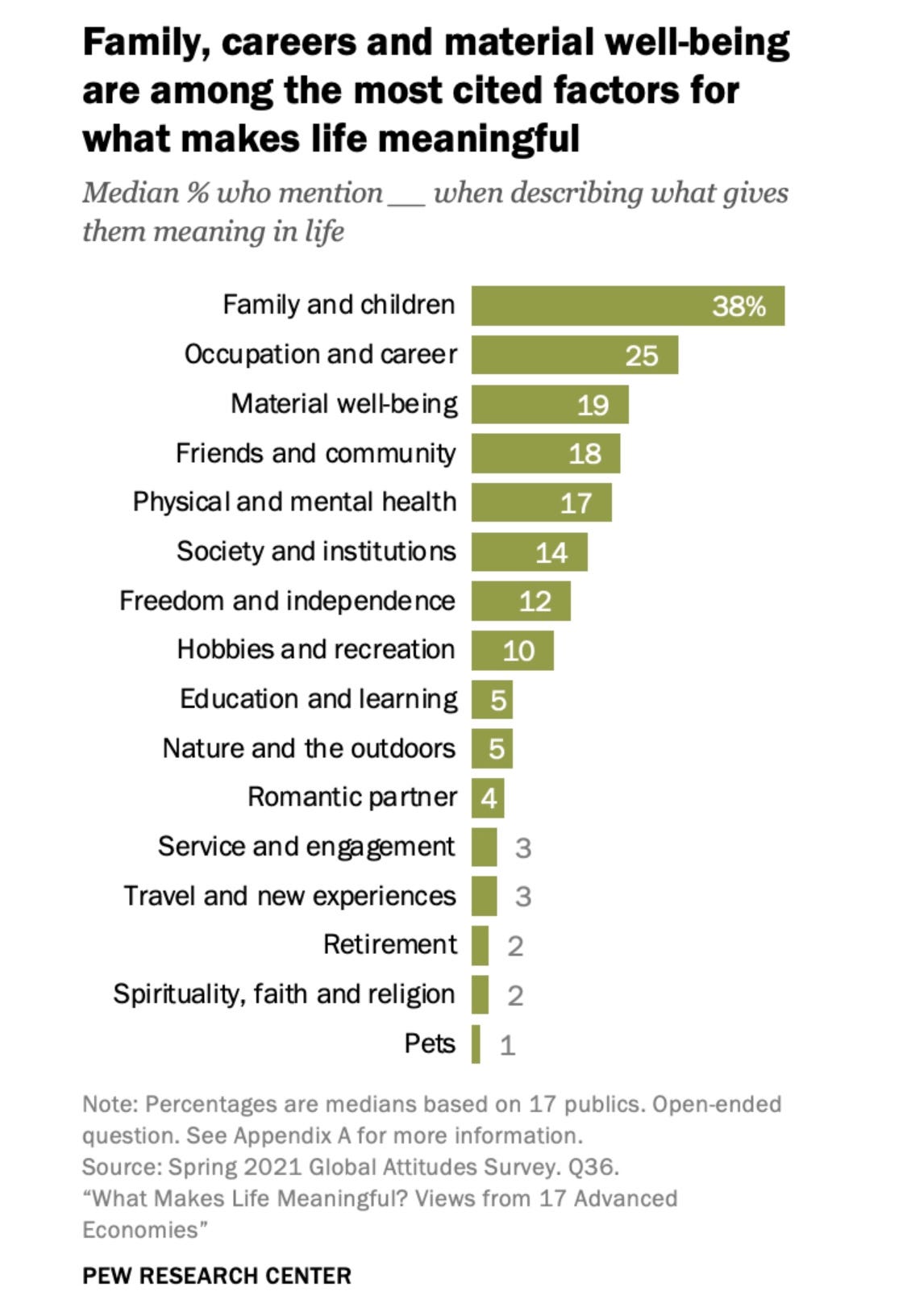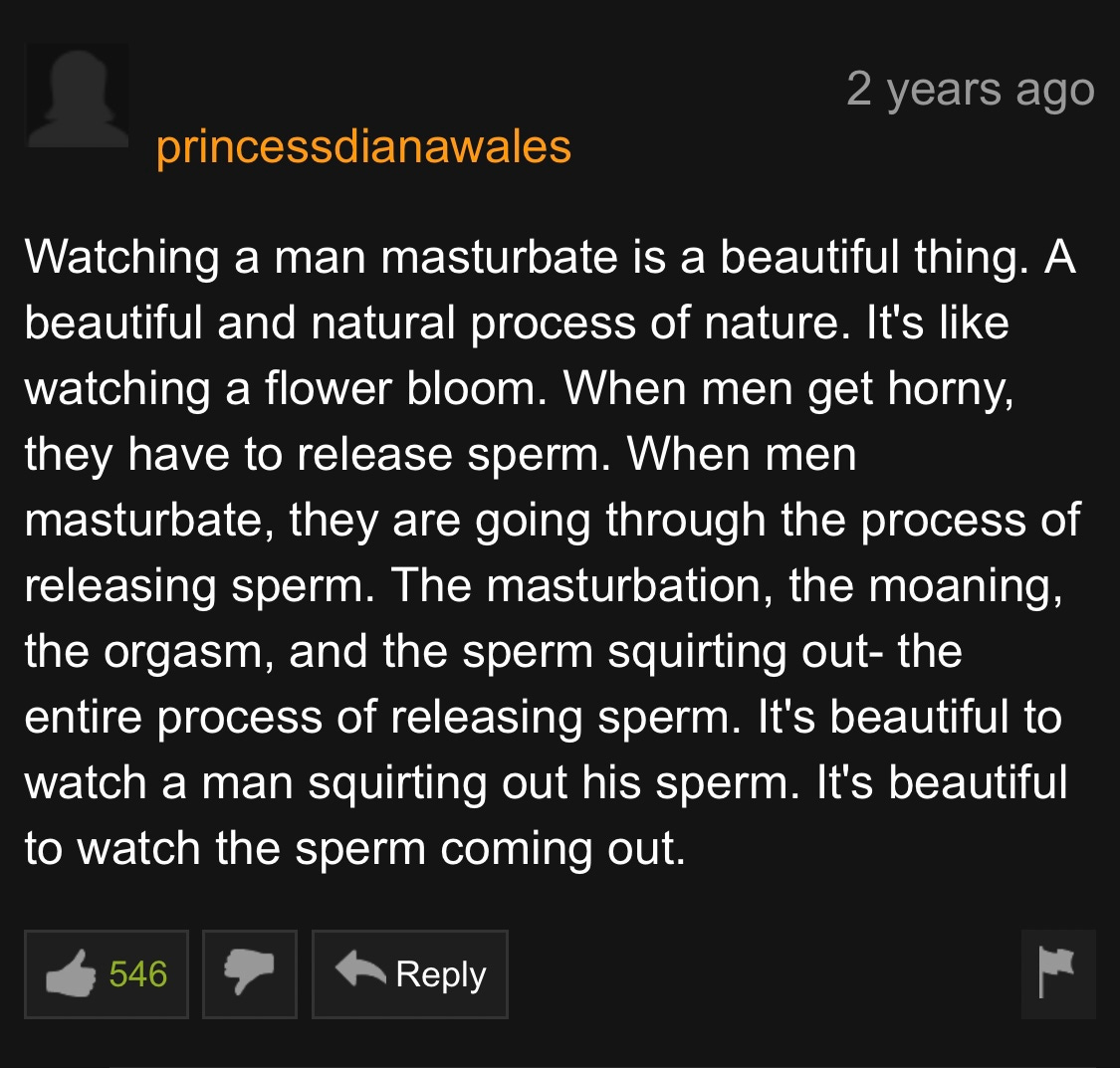Looking over a report from Pew Research Center earlier this month that analyzed where people find meaning in life, I noticed a profound absence. Many people mentioned family, career, and material well-being as their sources of meaning, while smaller numbers ranked faith, travel, and pets as highly important. Nowhere on this list was there a space for one of the central experiences of human life, indeed the source of life itself: sex.
In the middle of the rankings were factors like “society and institutions,” “education and learning,” and “nature and the outdoors;” religious devotion polled surprisingly low. The vaguely described “romantic partner” came in at only 4%, while “physical and mental health” was in the top five categories. One wonders where a person who cherishes sex itself might have expressed such an inclination, when presented with these choices.
Sex has transcendent meaning for many people. In “Open to Desire: The Truth about What the Buddha Taught,” psychiatrist Mark Epstein writes that in fourteenth century Tibet, “it was assumed that sexual intercourse was the most direct method of gaining a glimpse” of the state of perfect peace and enlightenment. Indeed, “desire opens up inner life.” Psychoanalyst Michael Eigen, in a provocative volume called “Lust,” argues that attraction and physical appetites are “part of what gives life” its radiance, “heightening existence” and entailing “an act of self-affirmation.”
Yet there is pervasive hesitation about sexual fulfillment in our culture today, and a creeping ambivalence. Peggy Noonan writes in the Wall Street Journal that a healthy establishment of family and reproductive life used to require “restraining passions,” but that we are now seeing “a different kind of disorder, one that looks less like ungoverned human desire and more like desire’s diminishment.” Citing an essential piece by Yuval Levin, Noonan speaks of “disordered passivity,” an “absence of energy and drive leaving people languishing,” and “excessive risk aversion.” She describes a far-reaching “tendency toward inhibition and constriction.”
It may be that these problems are part of the denigration of masculine energies that infects elite society. Qualities once positively associated with manhood, like assertiveness, dominance, and courage, are now derided in endlessly repetitive toxic masculinity chatter, coarse lamentation over the the ugliness of dick pics, and the tiresome insistence that enlightened men are those who have taken on traditionally feminine characteristics.
Noonan complains that erotic desires are now funnelled “into substitutes, such as pornography,” which Levin rather shrilly calls a “hideous, collossal scourge.” And yet it is in the comment section in a corner of Pornhub that I found a description of phallic beauty so earnest and pure, I can only call it a meditation on sacred masculinity:
For some reason, this entry moved me. It reminded me of other penile appreciation poetry, such as Walt Whitman’s—
It recalled William Blake’s celebrations of the body: “The head sublime, the heart pathos, the genitals beauty, the hands and feet proportion.” It brought to mind D.H. Lawrence’s assertion that “the root of sanity is in the balls.”
It is not difficult to ascertain and diagnose the vast emptiness of modern sexuality in all its permissiveness. At the same time that men are being asked to forgo their natural masculinities, femininity is similarly threatened. The sanitization of sexual subcultures is perhaps a symptom of this push toward an ironing or flattening of opposing erotic forces, writes Inez Stepman.
Listening to her articulate the “extreme oversaturation of sexual material” at our disposal, or reading other commentators on the “emptiness of secular feminism,” it is easy to feel compassion for many conservatives’ advocacy for a return to traditional sexual modes. According to Levin, there is a misguided movement to “look to politics” for “assertive and moralistic social agendas.” It can feel positively transgressive and countercultural now to reject an erotic encounter that does not lead to a defined or permanent relationship, let alone child-rearing.
But perhaps there is a sexual middle way that can recognize intercourse as spiritual exchange. It is possible to deny a vision of sex as the mere collision of fuckparts, or the idea that women can live in perpetuity as gay men, while also disputing the need to regress to a “trad” ideal that would rob us of spontaneous connection. Carl Jung, the founder of analytic psychology, had a love affair with a woman named Sabina Spielrein who was also his patient, student, and eventual collaborator. The erotic relationship in this instance was an additional way to communicate mutually nourishing information; on meeting, “they soon began to view each other as soulmates who were connected through mystical, telepathic bonds.” The married Jung “became convinced that Spielrein and he could know what the other was thinking without verbalizing their thoughts.” In an obvious case of “sexual boundary transgression” which would carry heavy consequences today, “the first…to disintegrate [was] the intrapsychic boundary between self and object.” Sex occurs first in the mind and its ultimate reality is metaphysical— “there is a kind of psychological fusion experienced prior to actual physical involvement.”
Desire is diminished not only by dissipation (i.e. giving it free reign through empty sex-positivity) or by confining it to neo-traditional constraints, but by refusing to acknowledge that it is essentially spiritual in nature. There is a way to negotiate with erotic longing that acknowledges, in the words of essayist Katie Roiphe, “some adventure out there that we are not having, some vividness, some wild pleasure, that we are not experiencing in our responsible, productive days.” Sex may bring fruits, or destruction. It may be in line with our political agendas, or not. The important thing is to recognize, after a year filled with reminders of mortality, that “we are bequeathed on Earth one very short life, and it might be good, one of these days, to make sure that we are living it.”
Sex is sacred. It is one of the deepest sources of meaning in life. And if liberals are mistakenly utilitarian in making art mainly about social impact, conservatives are equally mistaken in making sex primarily about procreation. The essence of sex is more than any one “romantic partner” can give you; it is deeper than simple reproductive aims. It is an art form; it is a language. And when desire is embraced, it illuminates every other part of life.









